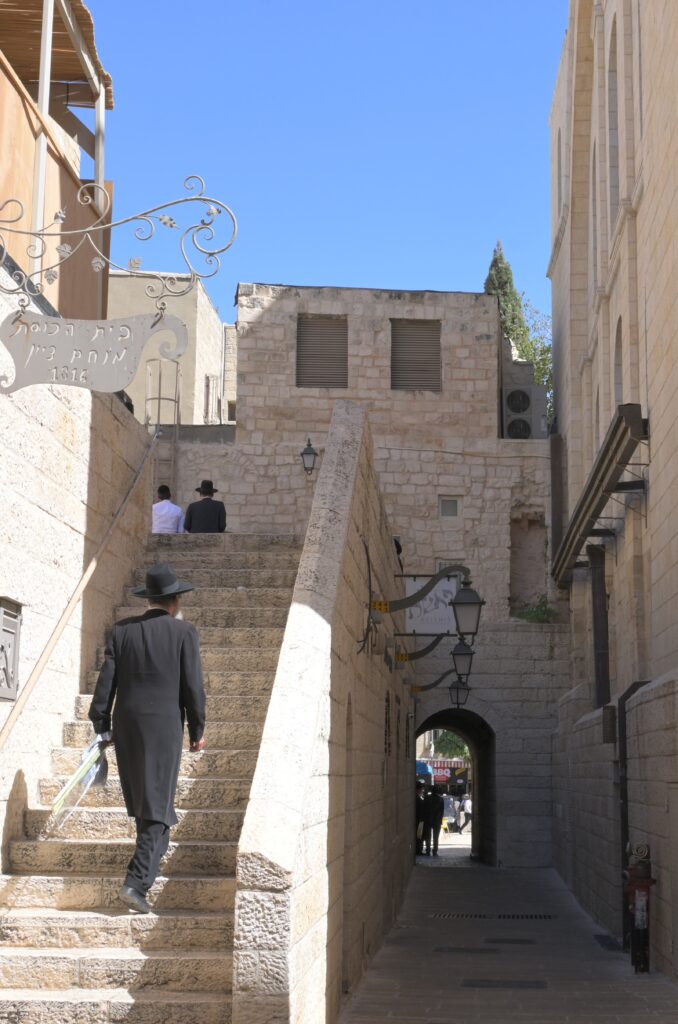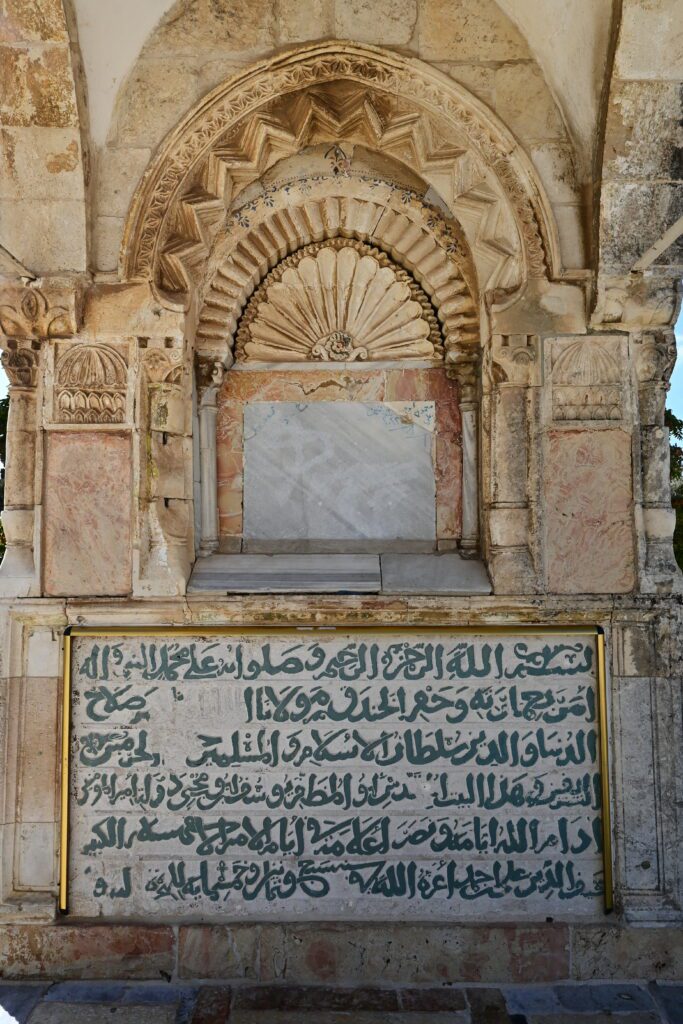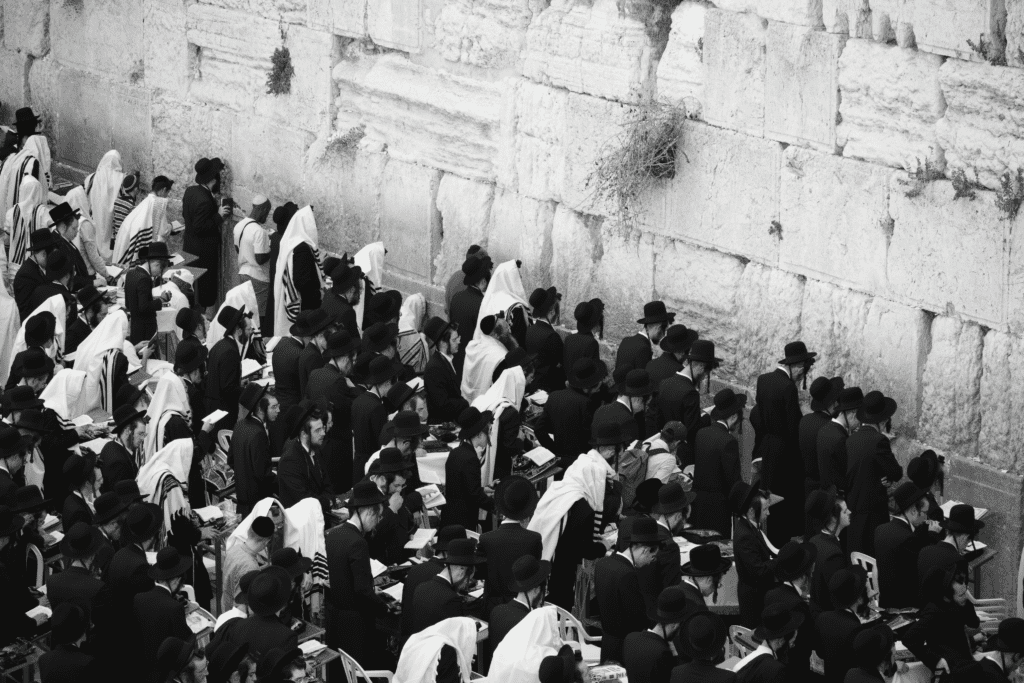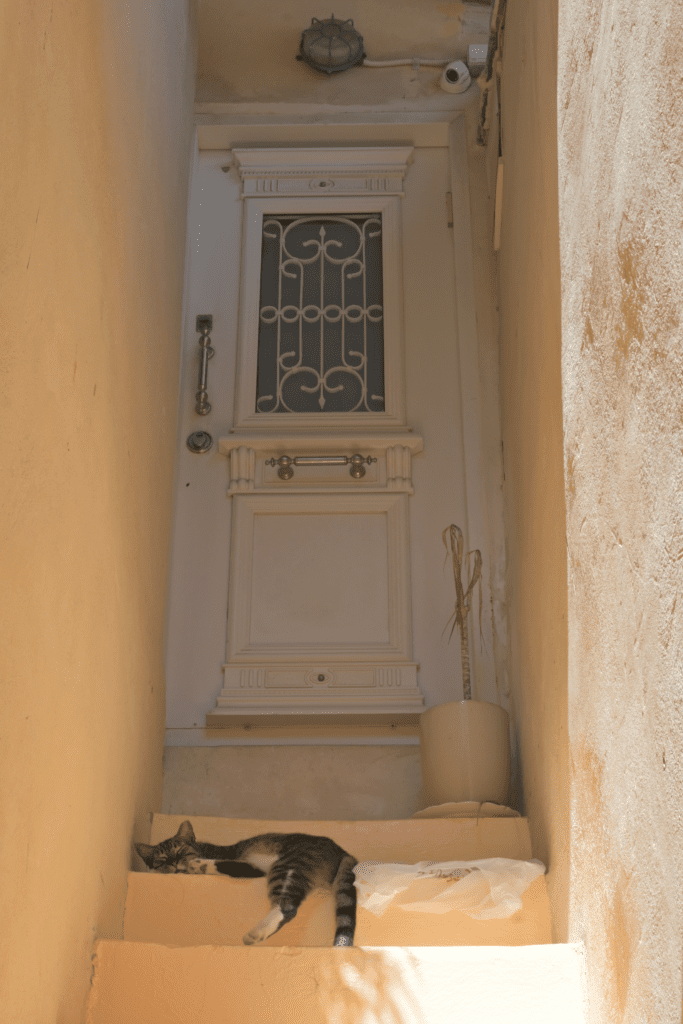Any opinions expressed in this article represent the standpoint of its author and not UPF Lund or The Perspective’s editorial board.
Palestinian lives have been separated into different areas: ranging from the Palestinians forcefully displaced across the globe, Gaza, the West Bank, East Jerusalem, and Palestinians in Israel holding an Israeli passport. They are called the ‘48 Palestinians’, referring to the 1948 Nakba. During my time in the West Bank (documented in ‘A photo story: contrast of lives in the West Bank’) in September 2023, I crossed the apartheid wall on several occasions to visit Jerusalem (Al-Quds in Arabic). I then travelled around Israel to better understand Palestinian stories, in the form of lives, imagery, and architecture.
In this photo article, I use my photography of Palestinian architecture and people, and Israeli symbolism—in Jerusalem and Israel (taken in September 2023)—as well as stories I gathered, to showcase Palestinian and Arab lives and heritage.
Contrast of locations
The disparities between the West Bank, East Jerusalem, and Israel are like nothing I have ever seen before. In the West Bank, the struggles of Palestinians under Israeli occupation are very visible. In Jerusalem, you can feel the tension. It is the beating heart of Palestinian society, not only religiously, but also historically and symbolically. At the same time, Israel has been occupying East Jerusalem, including the old city, since 1967, and illegally expropriating Palestinians from their homes in East Jerusalem. Tel Aviv, in contrast, despite its proximity to Gaza and the West Bank, feels far away. Everything in Israel looks harmonious and normal, however, there is more than meets the eye.






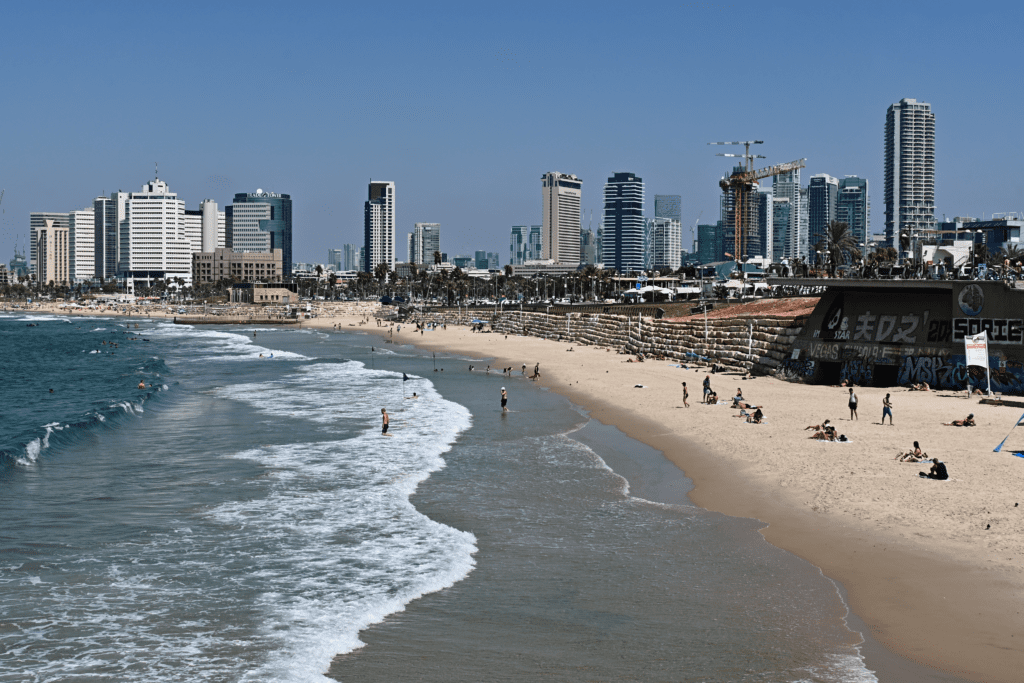

NOTE: Click on the photos to zoom in.
From left to right:
1) Security checkpoint leading to an occupied neighbourhood in Al-Khalil/Hebron, Occupied West Bank.
2) Damascus Gate seen from inside the Old City of Jerusalem.
3) Israeli and Jewish symbolism in Jerusalem’s Old City.
4) Tel Aviv seen from Jaffa Beach.
I could see how the historical houses within Israel used to belong to Palestinians and are now inhabited, some may say occupied, by Israelis. Being Maltese, I recognise Arab houses. Malta has Arabic roots, with similar architecture to that of Palestine. I know many Palestinians whose families still own the keys to the houses they were expropriated from in 1948. It makes one wonder who used to live in these historical houses in Israel.
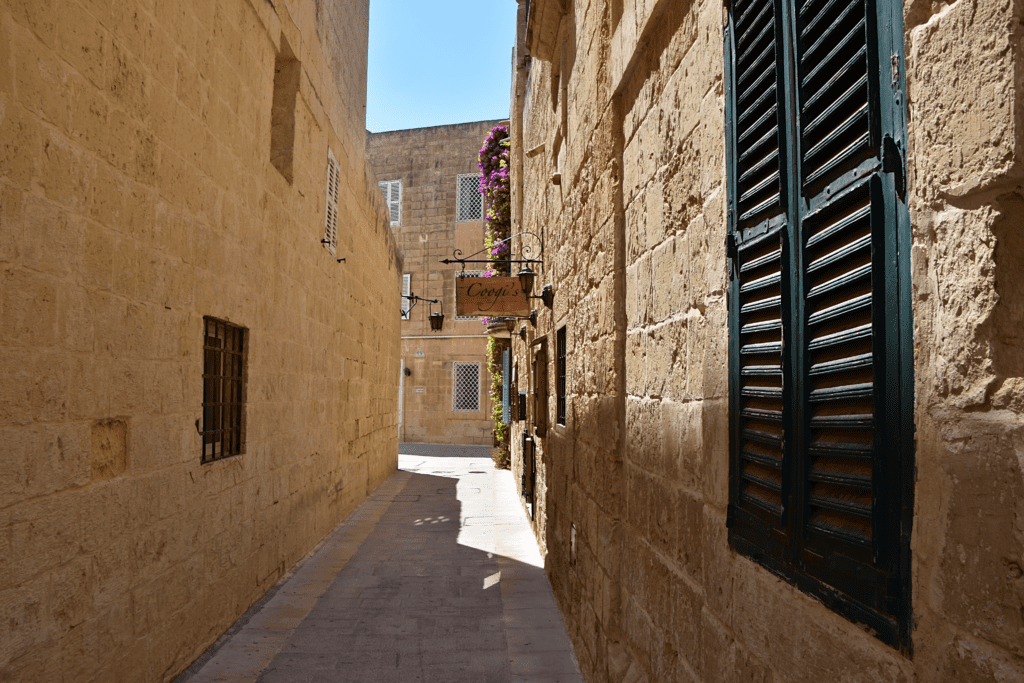

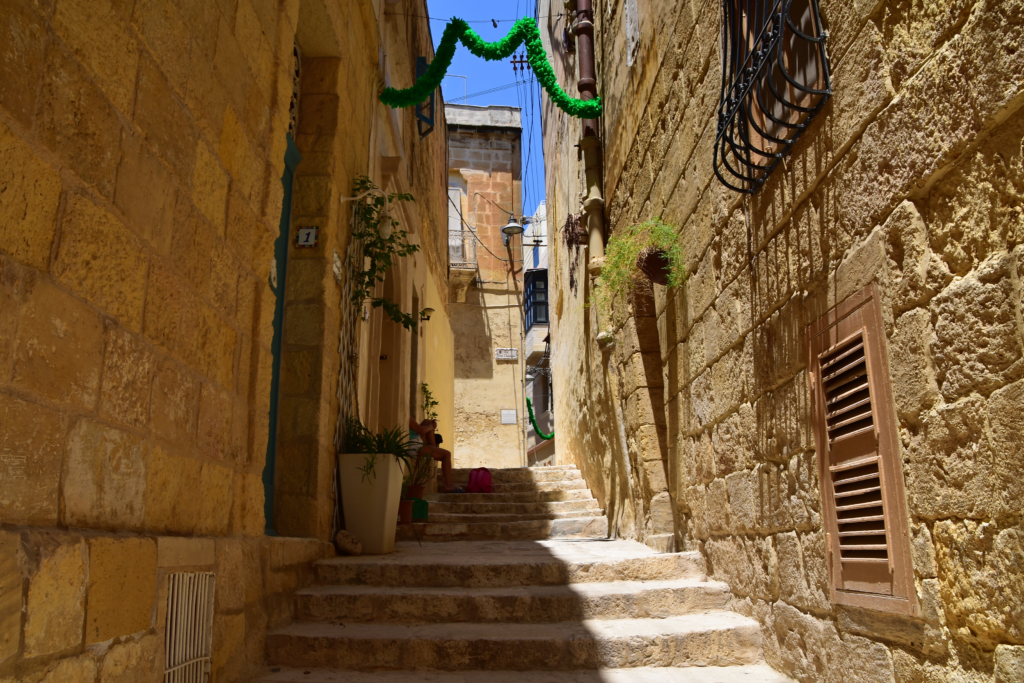





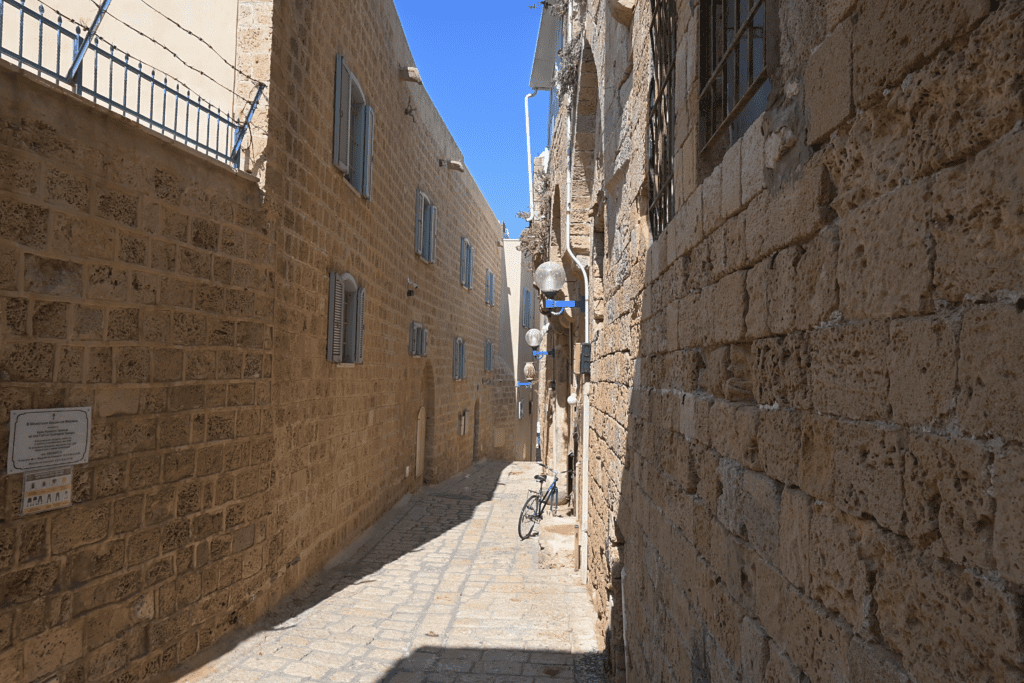

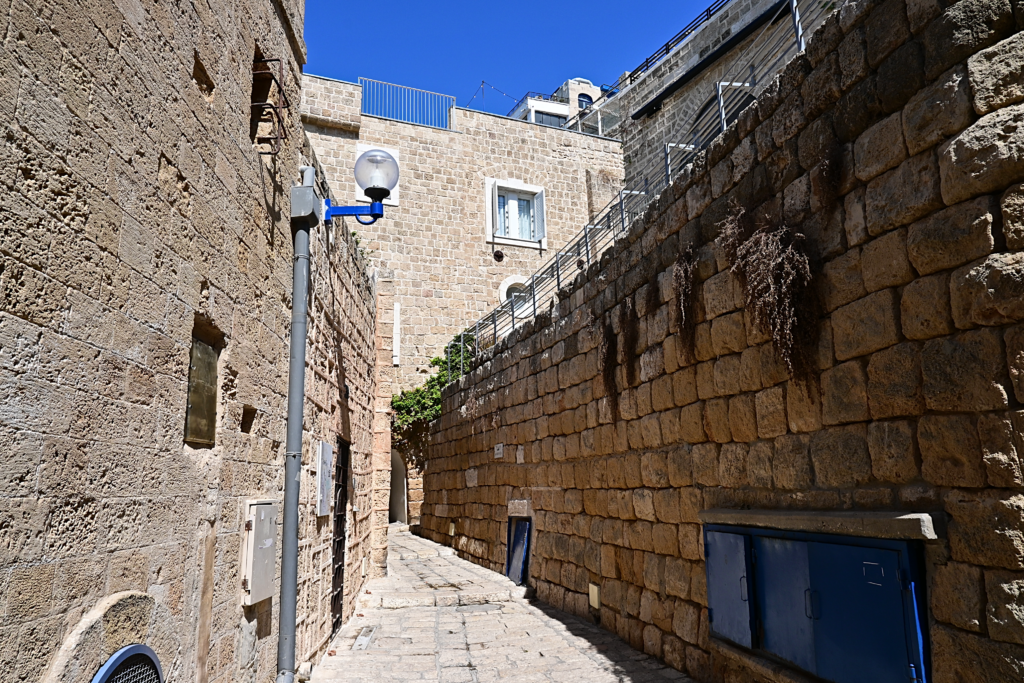

From left to right:
1) An alley in Mdina, Malta. The similarities with Palestinian historical cities in Israel and the West Bank are uncanny.
2) An alley in Birgu, Malta. The similarities between both Maltese and Palestinian streetscapes, through their Arabic heritage, are clear.
3) An alley in Mdina, Malta.
4) An alley in the old town of Jaffa. Walking through such alleys I felt transported back to Malta.
5) An alley in the old town of Jaffa.
6) An alley in the old town of Jaffa. Walking through these alleys and observing the traditional, I wonder who used to live there before 1948.
Beyond the wall: Going to historic Jerusalem from the West Bank
The old city of Jerusalem is filled with tensions. On the one hand, you have Palestinians in the Christian and Muslim quarters with children playing in the labyrinth-like alleys. On the other hand, Israel promotes pre-Arab Jewish history in the Jewish Quarters, completely ignoring those who lived there in the past millennia—there were also Arab Jews present in the area before. The Jewish Quarter sits on what used to be the Moroccan Quarter, most of which was demolished and rebuilt by Israel. The area, which sits between the Armenian Quarter and the Western Wall, used to present a rich history and heritage in civic and humanitarian aspects as well as the connection of Moroccans with Jerusalem.
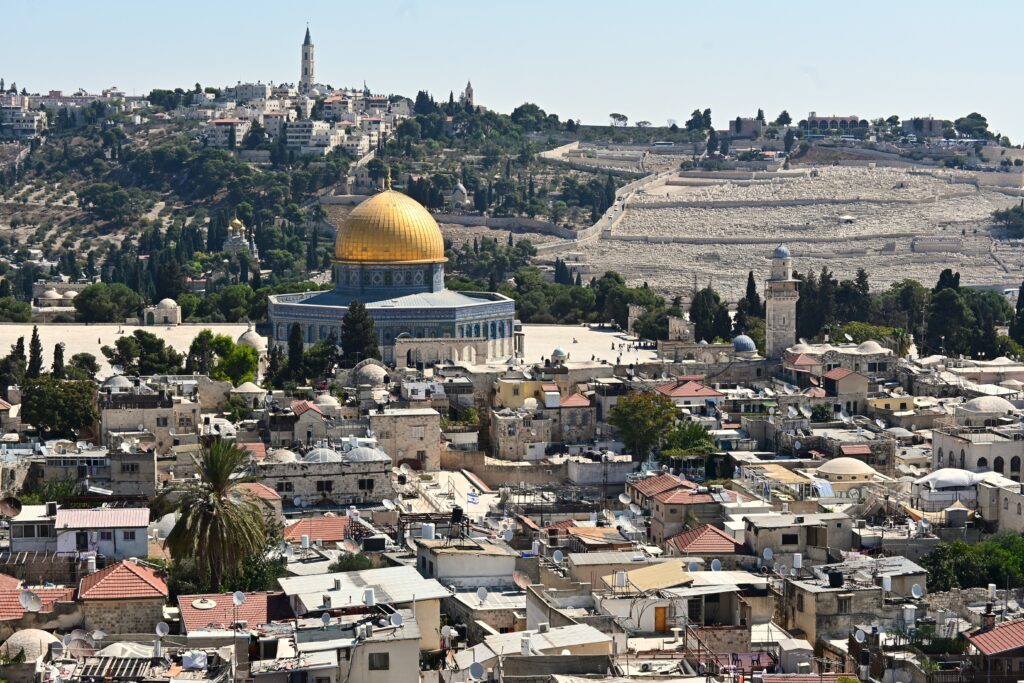









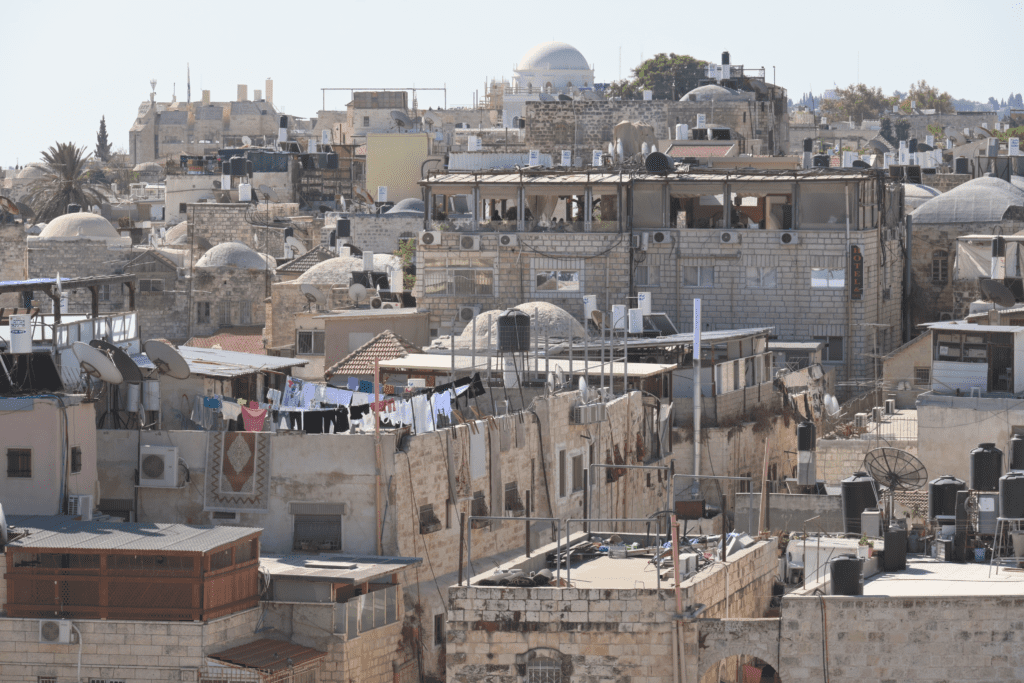

Cityscape of historical Jerusalem
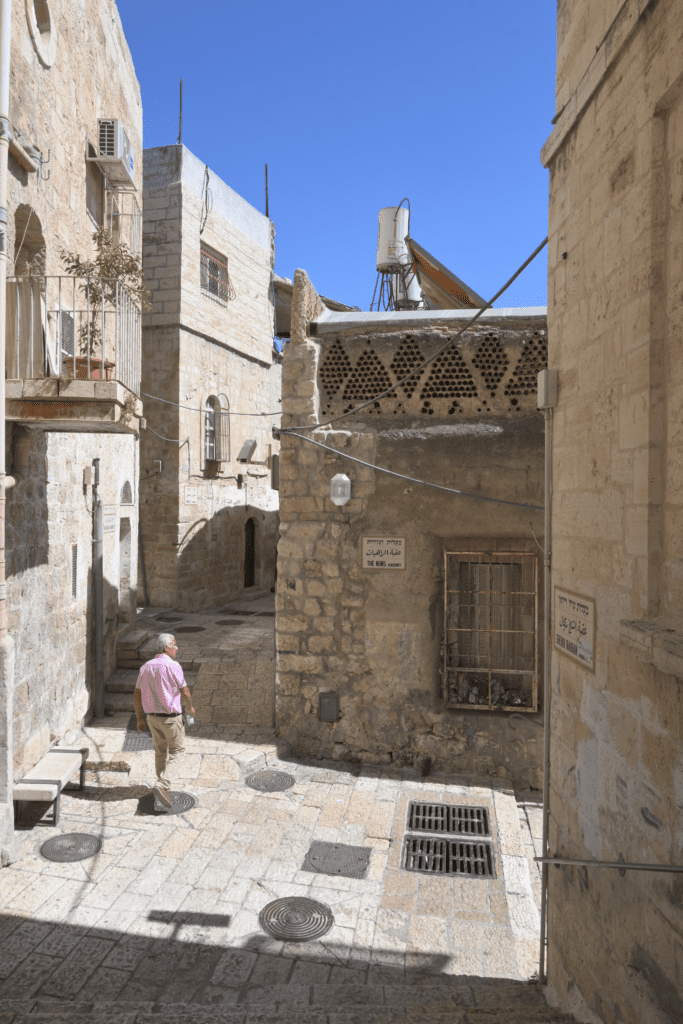

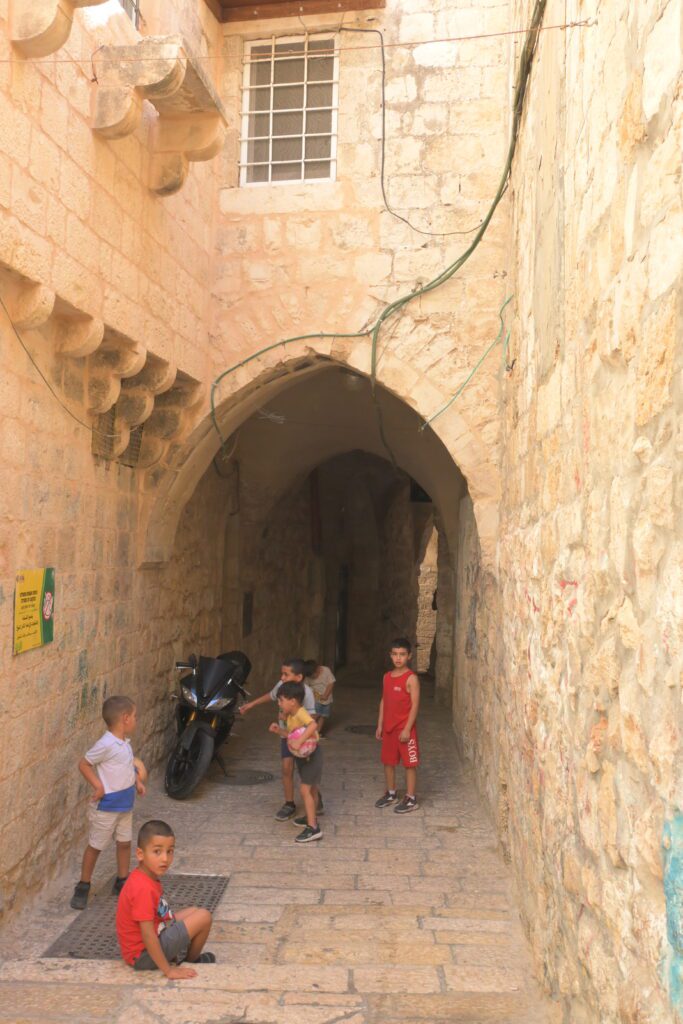



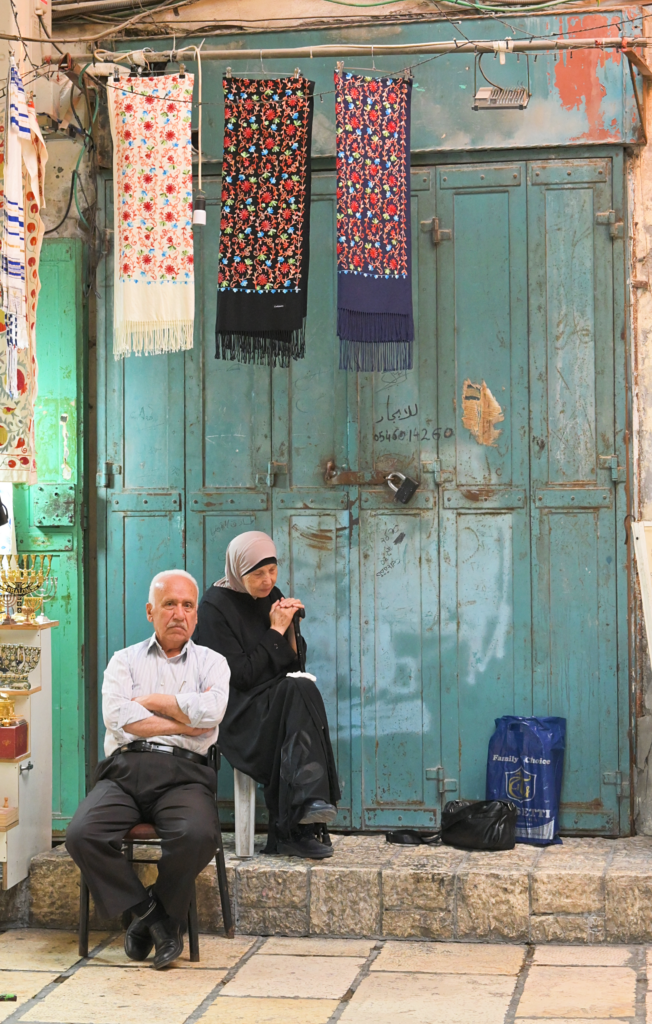



From left to right:
1) Walking in the alleys of the Muslim Quarter
2) Children playing in an alley in the Muslim Quarter
3) Al-Wad Street, an important street in the old town of Jerusalem
4) Vendors at the souk (market)
5) People buying their groceries at the souk (market)


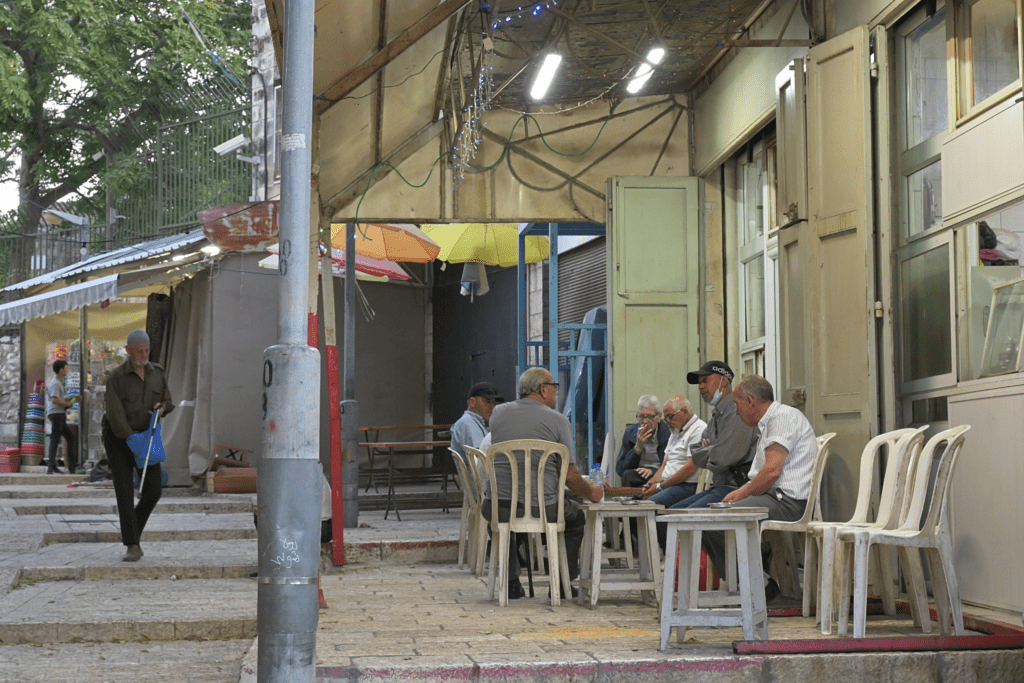





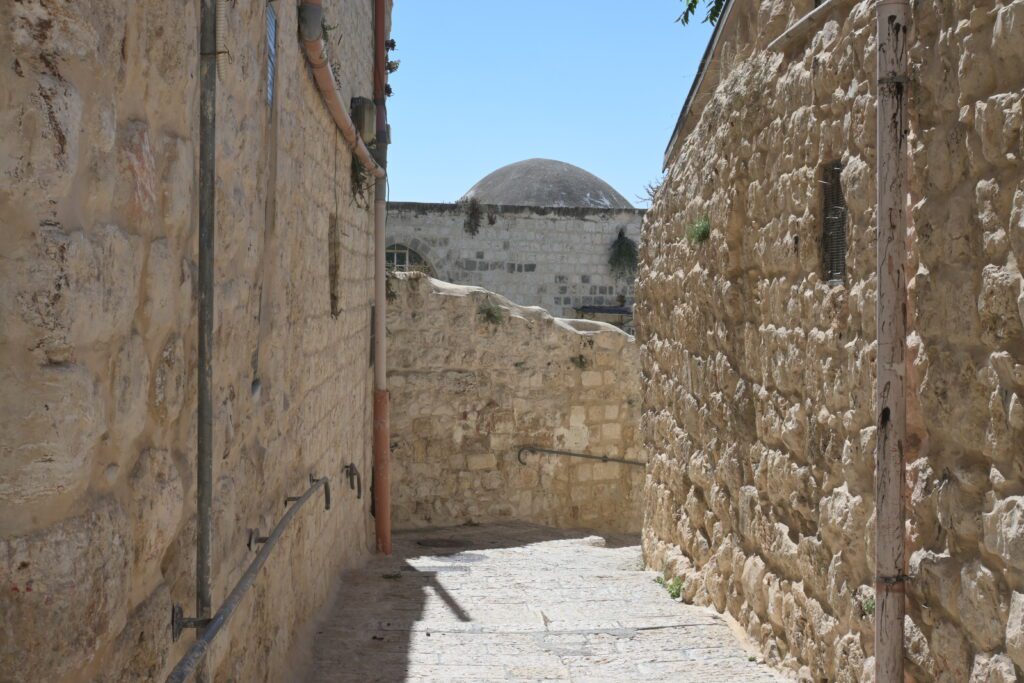

Daily life in the Muslim Quarter






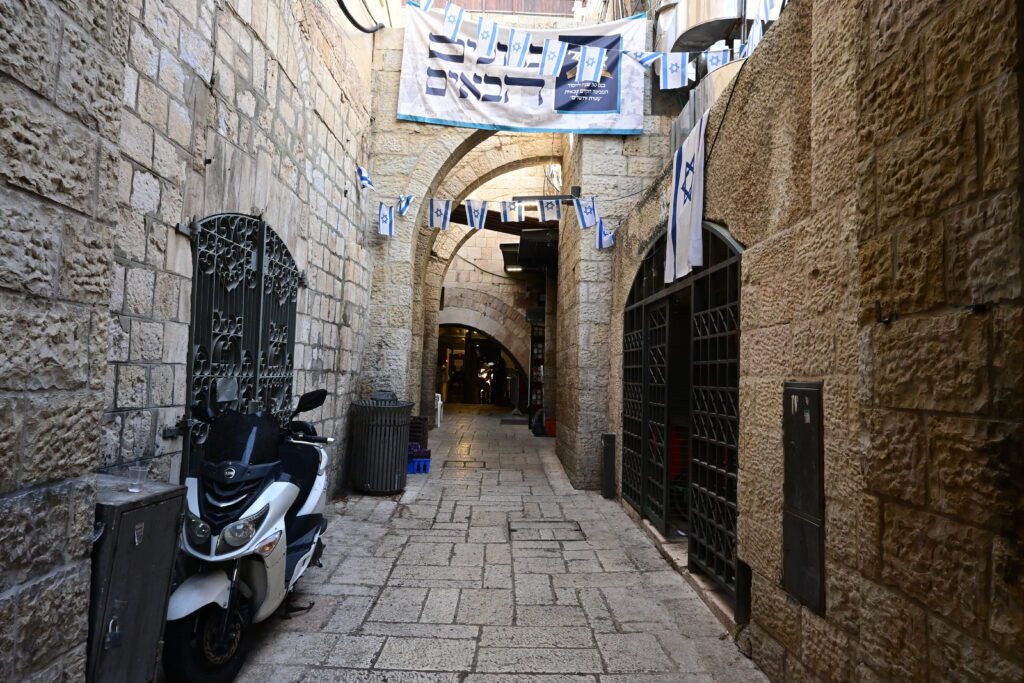

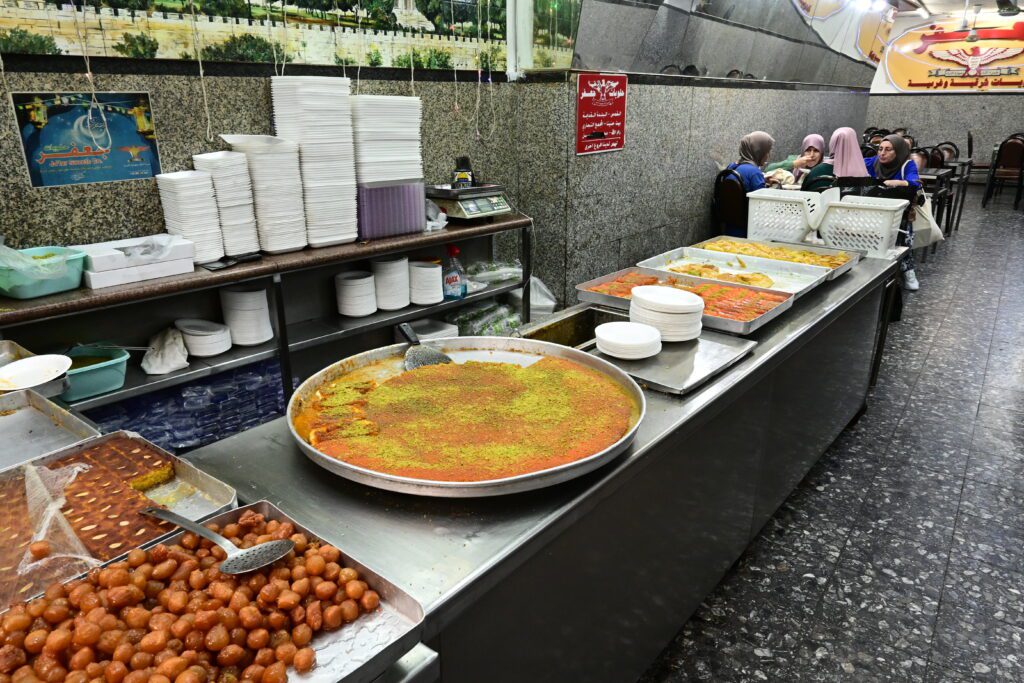

From left to right:
1) Al-Wad Street, an important street in the old town of Jerusalem
2) Intersection at Al-Wad Street. Despite the tensions and the occupation, Jerusalem is still a bustling and vibrant city, maintaining itself as the heart of Palestine
3) Jewish children in Al-Wad street which leads directly to the Western Wall
4) Al-Wad Street right before reaching the tunnel that leads to Western Wall
5) Jafar Sweets’ famous Kunafe. Kunafe is a famous traditional Palestinian sweet, originating from the city of Nablus
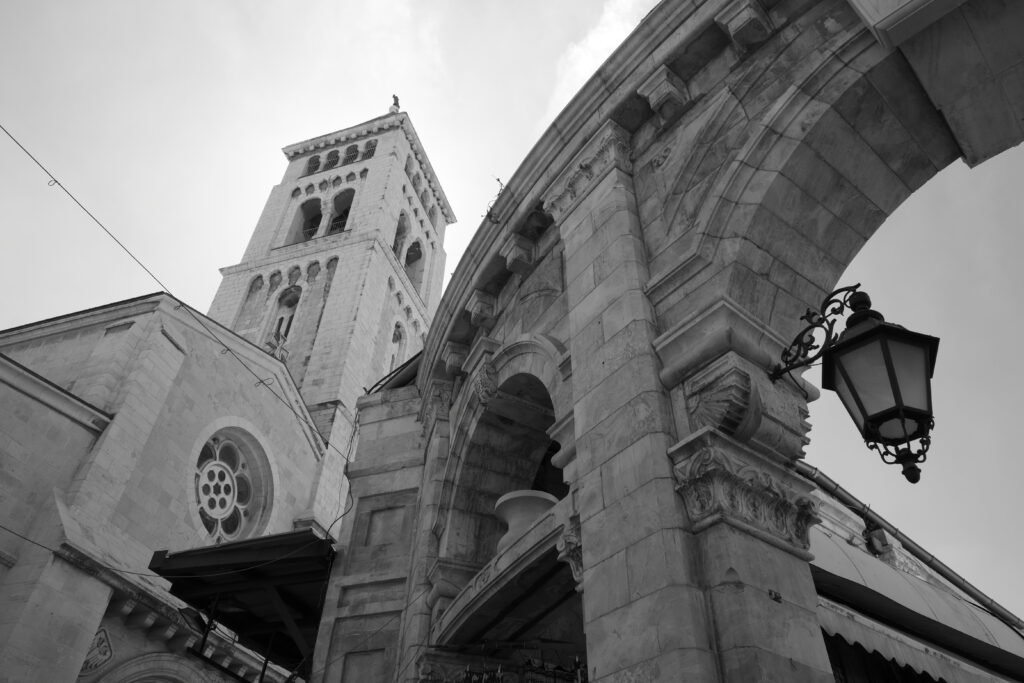



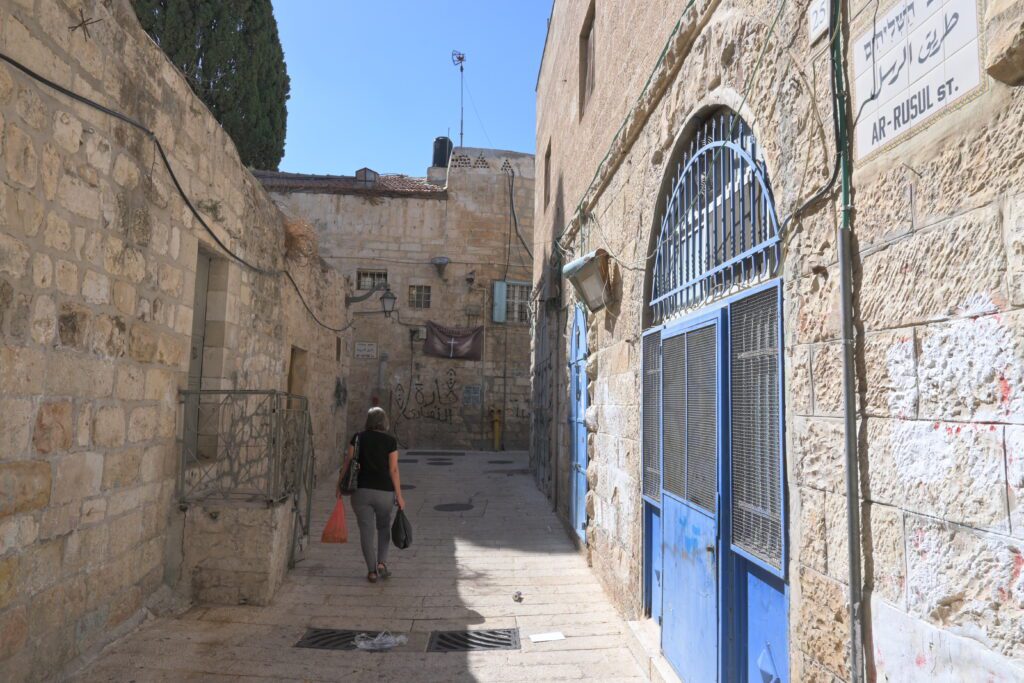







From left to right:
1) Lutheran Church of the Redeemer
2) A door in an alley in the Christian Quarter
3) Ar-Rusul Street, Christian Quarter
4) An alley in the Christian Quarter
5) Two Christian Palestinians next to a chapel, where a version of the crown of Jesus can be seen
6) An alley in the Christian Quarter


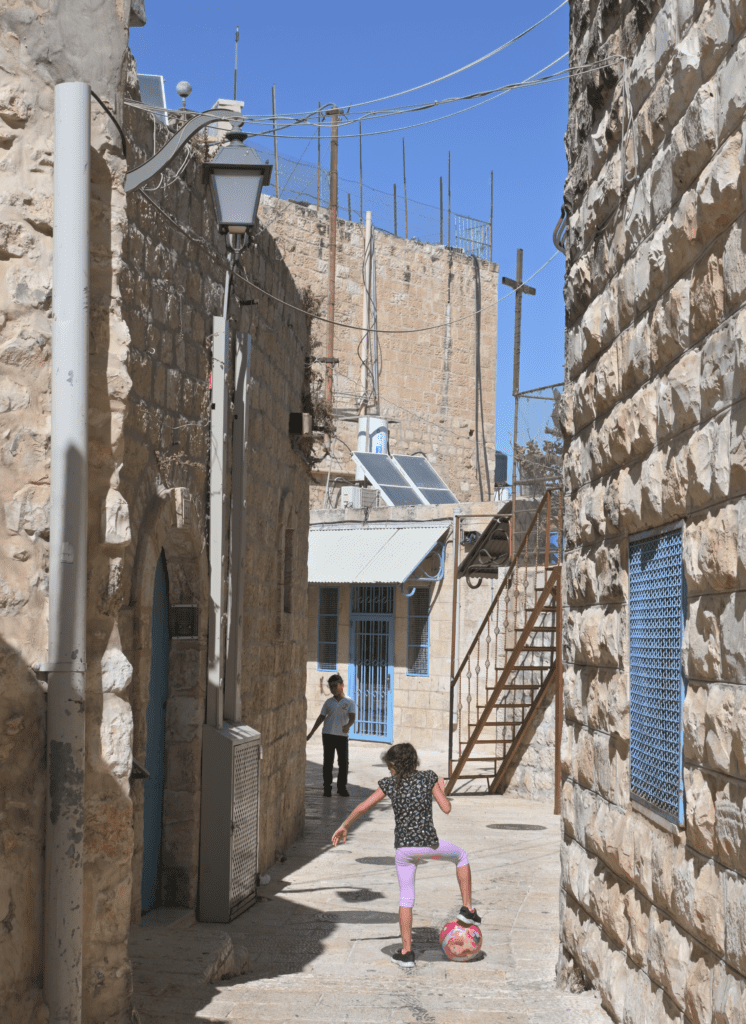

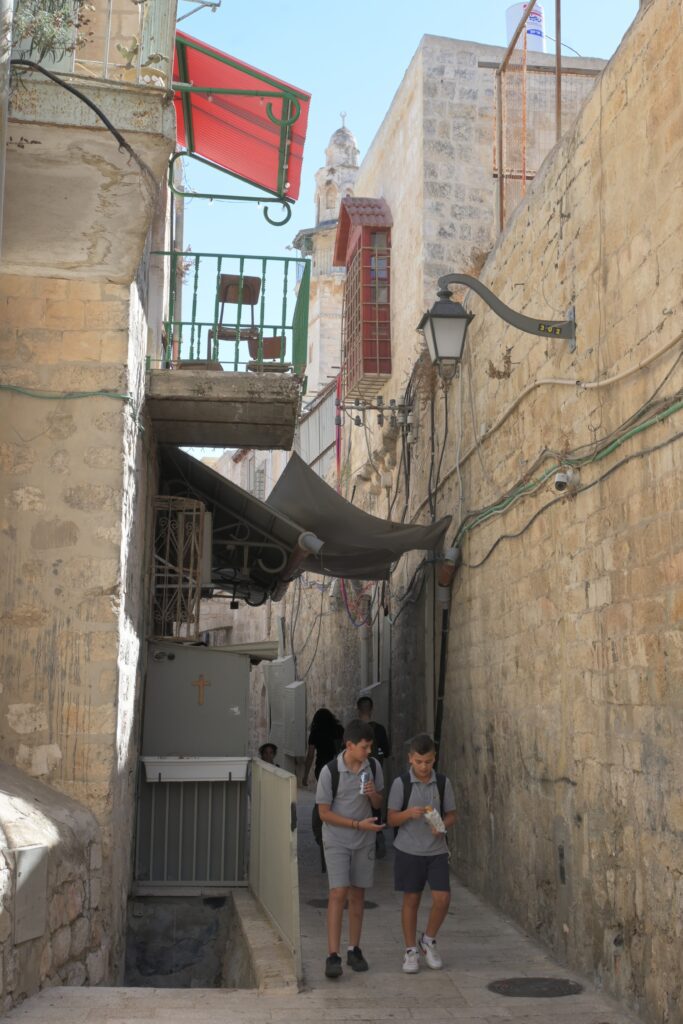



From left to right:
1) Inside the Church of the Holy Sepulchre
2) Palestinian children playing in the Christian Quarter
3) Palestinian children returning home from school in the Christian Quarter
4) Palestinian children moving around with their bicycle in the Christian Quarter
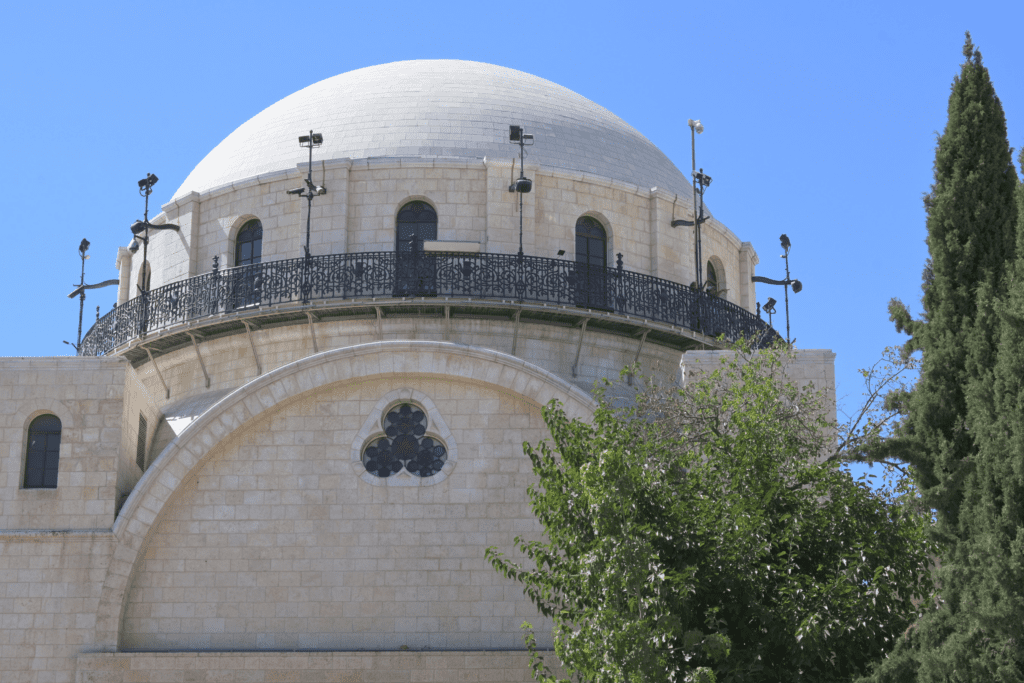

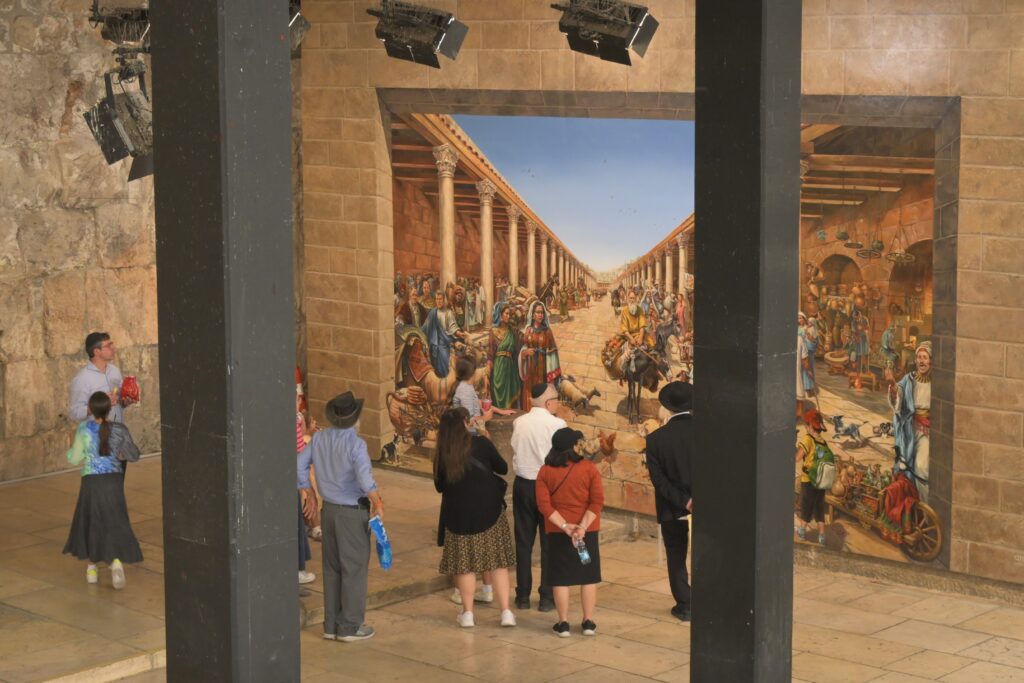



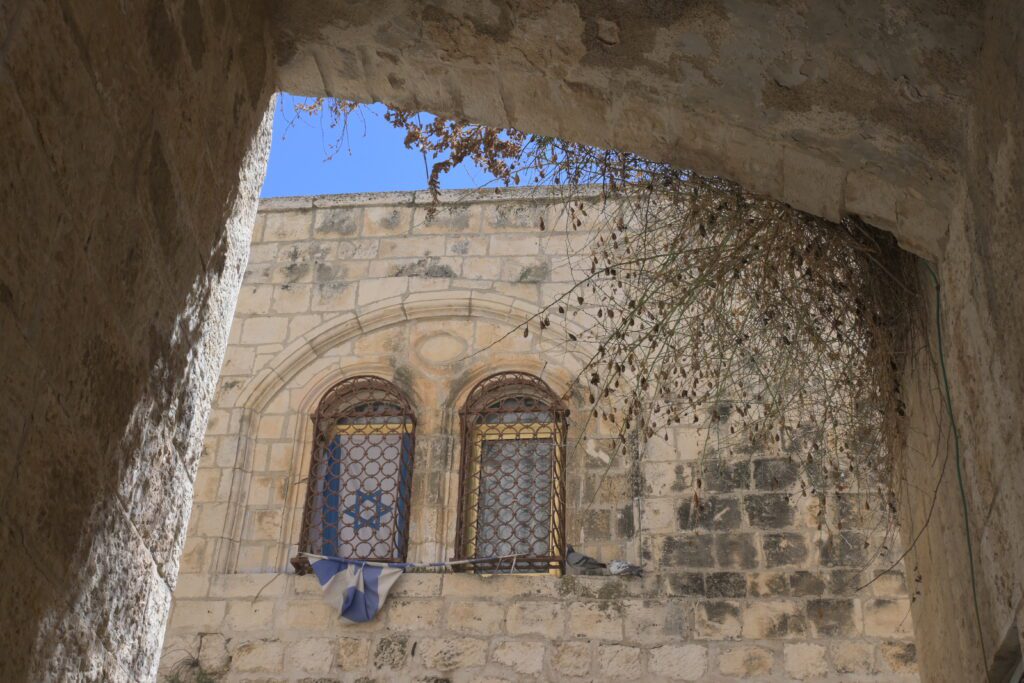

From left to right:
1) Hurva Synagogue
2) People looking at a painting showing Jewish life in Jerusalem in the Classical Period
3) Many buildings in the Jewish Quarter are relatively new since they were built over the Moroccan Quarter, which was demolished by the Israeli forces
4) Israeli flag on a window
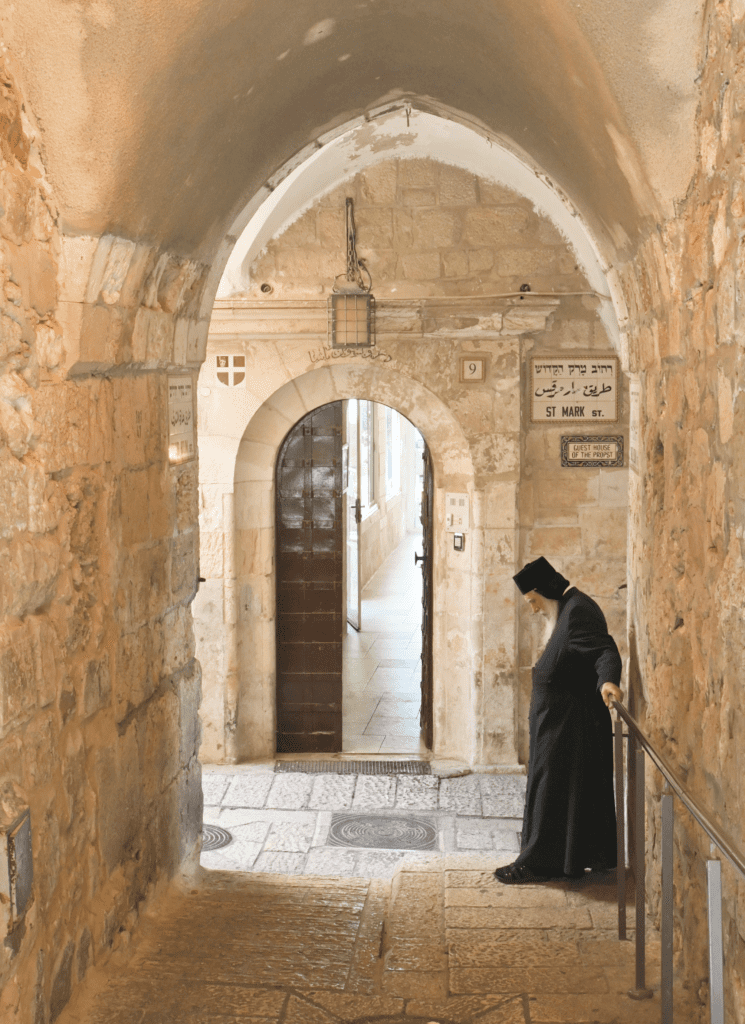



1) A priest in the Armenian Quarter
2) A Jewish man walking in the Armenian Quarter. Parts of the Armenian Quarter have been sold to and taken by the Israelis


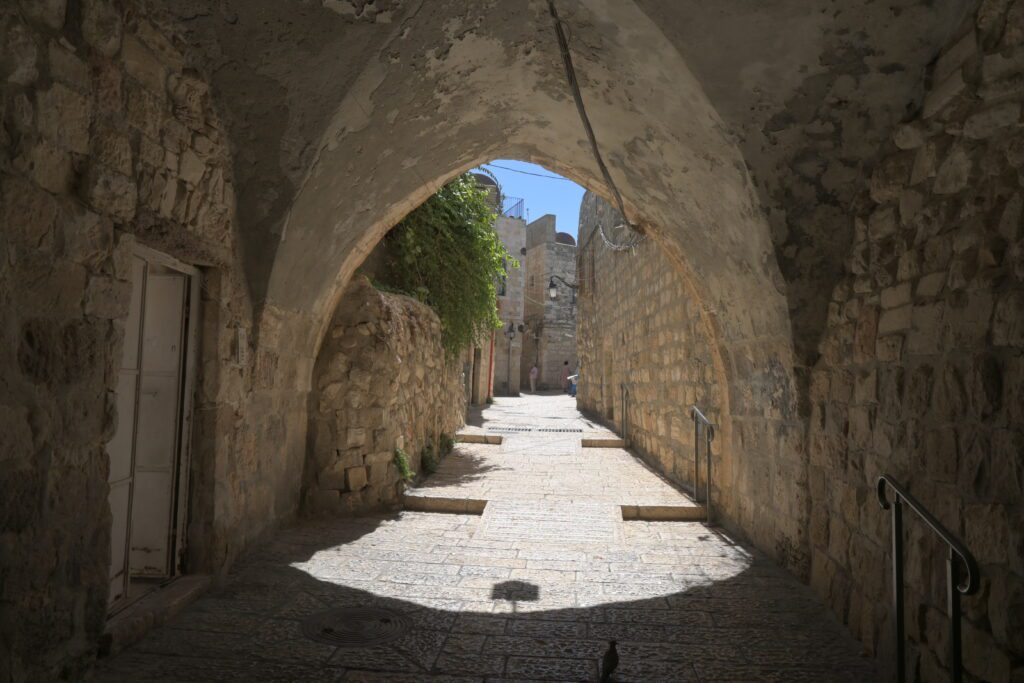

1) Syrian Orthodox Church
2) An alley in the Armenian Quarter
The impact of the occupation in Jerusalem’s old town can be seen surrounding Al-Aqsa Mosque. The mosque is surrounded by several gates which serve as entry points. I could observe three soldiers stationed at each gate. They decide who gets access to the mosque. While there, they interrogated my friend Mohammed and prohibited a young Palestinian from entering. In contrast, ultranationalist Jews were praying at the gates. Since only Muslims can enter through those gates, I had to go through a security check (which has imagery of Israeli soldiers killed by ‘terrorists’) and cross the Mughrabi bridge next to the Western Wall, where Jews can be seen worshipping. On the bridge, there is a miniature version of the Jewish Temple that used to be located where Al-Aqsa Mosque is now.
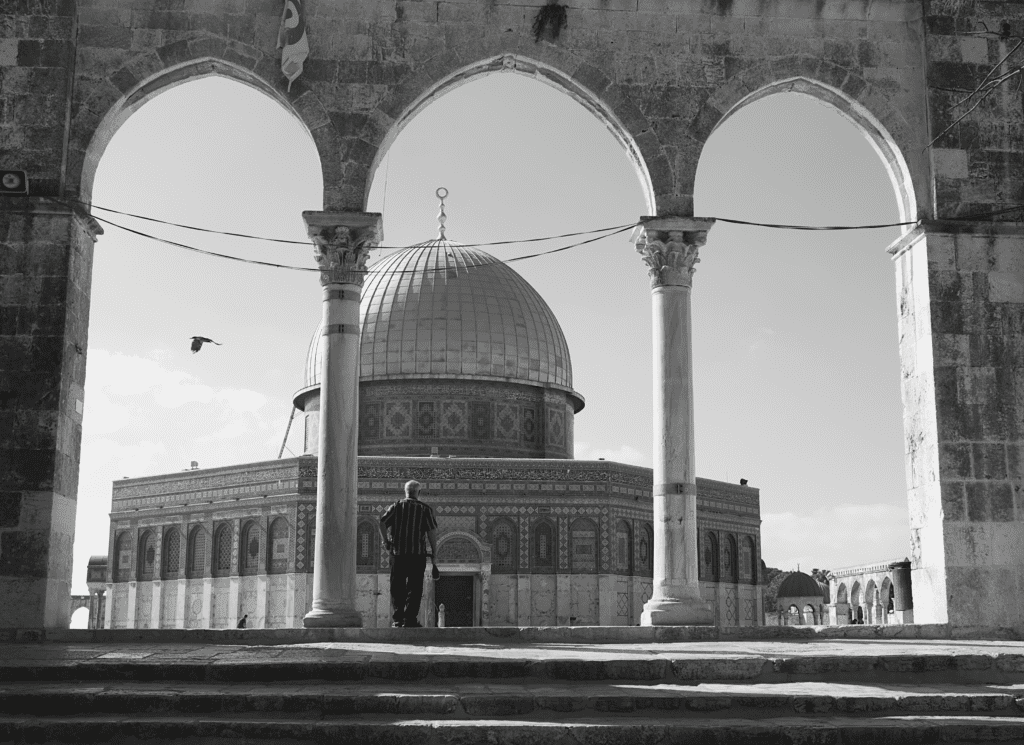







From left to right:
1) A man walking towards Dome of the Rock
2) Women in Al-Aqsa Mosque
3) View of Dome of the Rock from the Walls of Jerusalem’s old town
4) Dome of the Rock as seen from the tower of the Lutheran Church of the Redeemer
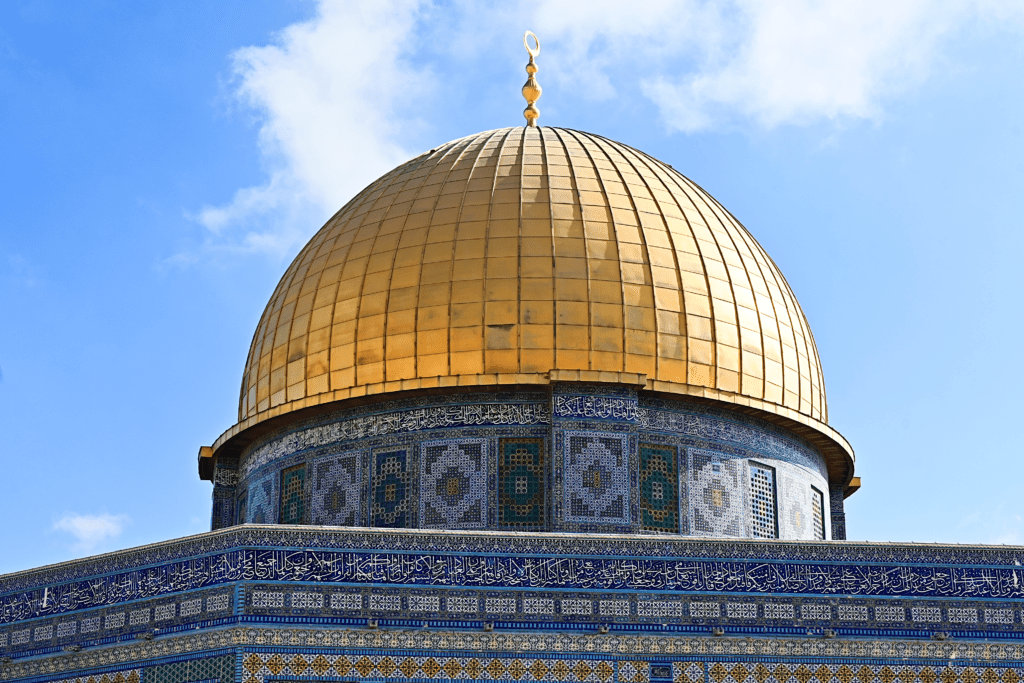





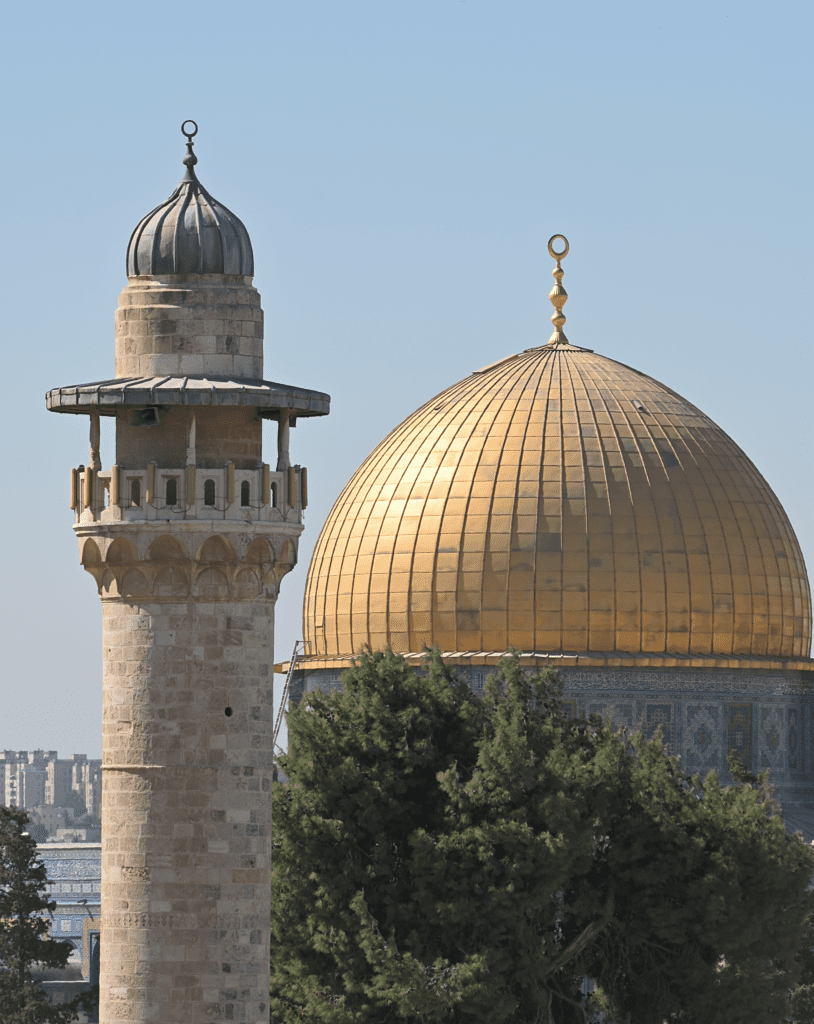

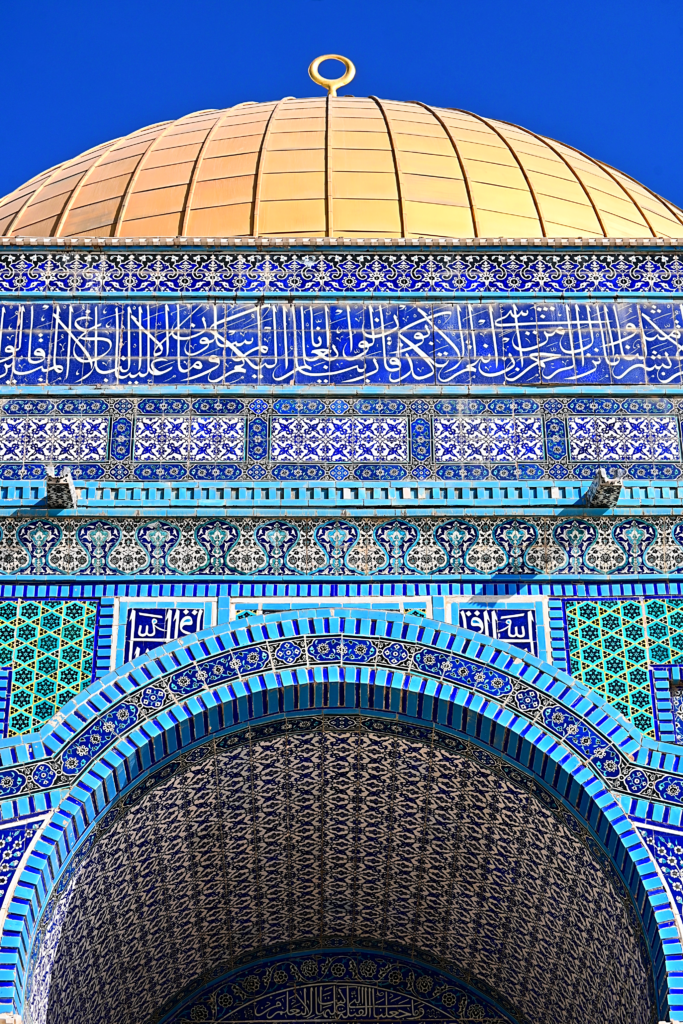

Dome of the Rock and its tiles seen from different perspectives
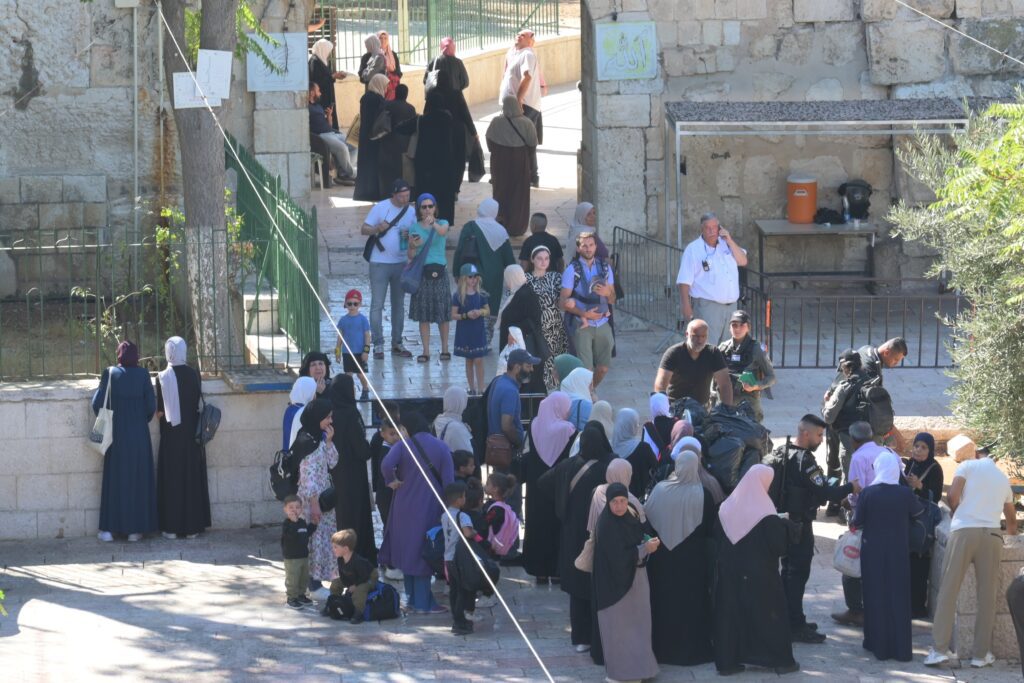

Jerusalem’s undeniable Jewish heritage is not separate from the Arab one, it is part of it, similar to Al-Andalus’ (current Spain) heritage. Palestinians of all religions, including Palestinian Jews had already been living in the land. A distinction should be made between the Israeli settlers and the Jewish heritage in Palestine and the Arab world. An artificial line is being drawn between the Arab and the Jew. This erases Palestinian and overall Arab heritage.
Stories of past lives in Jaffa
I have met many Palestinians whose families originated from different cities in historic Palestine. Many are originally from Jaffa (Yafa in Arabic), which is a part of Tel Aviv now. They have shared with me their grandparents’ stories about their past livelihoods, homes and fields in Jaffa. Now, their old family houses have been either destroyed or occupied by Israelis. None of them have the right to return.
My friend, whose family is from Jaffa, explained to me how his grandfather’s house was stolen by Israeli settlers who are now renting it out on a famous housing website. He showed his grandfather the pictures of the rented house. It was extremely disheartening to see, to the point that he broke into tears since they did not even bother to remove the furniture or personal belongings. This truly shows their complete disregard for the lives and possessions of the Palestinians. My friend longs to finally go to his ancestral home in Jaffa and finally feel the sea of Jaffa.
A university colleague explained to me how his grandfather used to be a wealthy merchant who owned 6,000 acres of orange groves, located between the city of Jaffa and Majdal. He used to ship his produce with his own ship from Jaffa to Liverpool and marketed 10% of the total citrus exported by Palestine to Europe. His family owned a three-storey house with about 20 rooms near the seaside in Jaffa and they used to go snorkelling in the Mediterranean when he was a child. Following the occupation of the city in 1948, the house was turned into the headquarters of an Israeli military court.










Exploring the alleys and house facades in Jaffa’s old town
Last photo: One can observe the information panel on the right
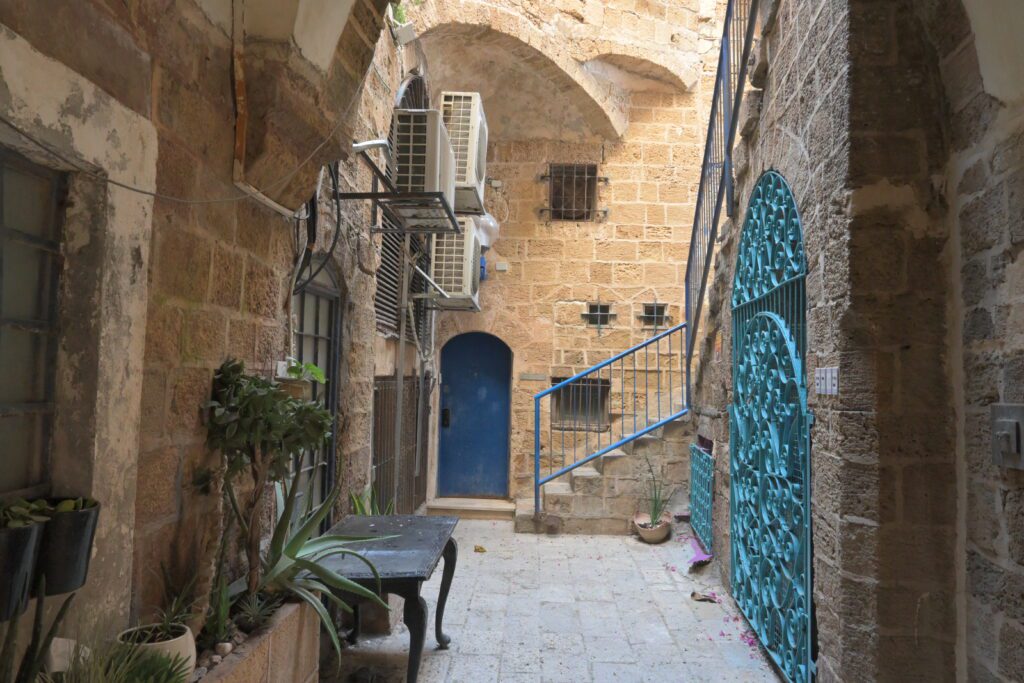

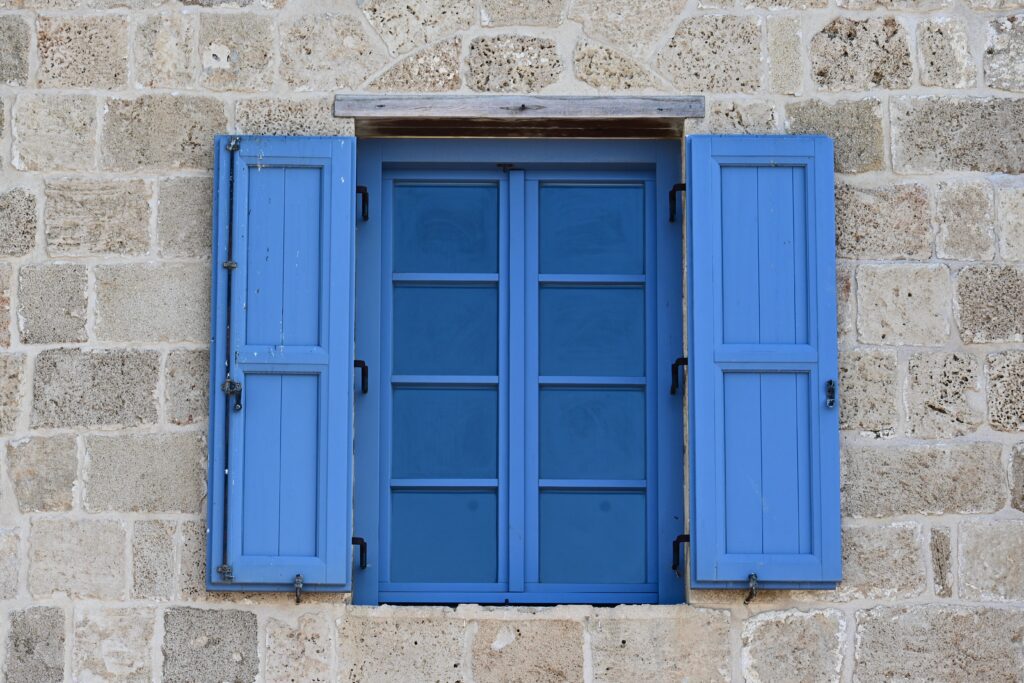

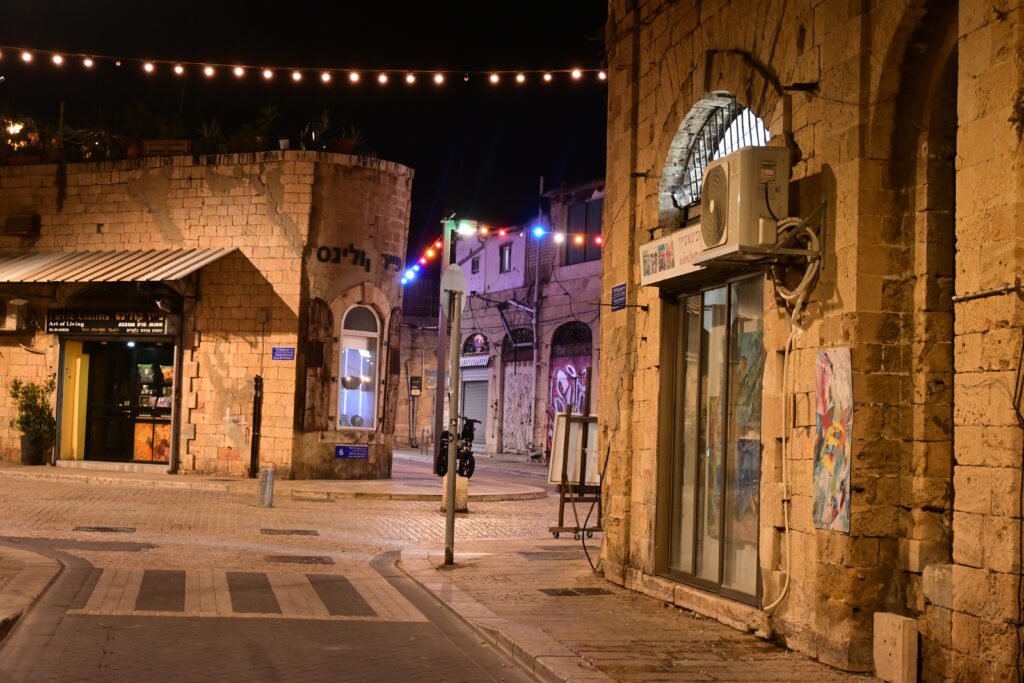



From left to right:
1-2) More alleys and house facades of Jaffa’s old town
3) Jaffa by night
4) The port of Jaffa. Many Palestinians originally from Jaffa long to finally return to their ancestral coast in the Mediterranean
In Jaffa, I observed misleading descriptions on information panels talking about the city’s history. The Palestinian Christians who lived there are simply portrayed as Christians as if they were not Arabs. This indirectly reinforces the stereotype of the Arab-Palestinian only being Muslim. The historical architecture is described as Ottoman, referring to when ‘Israel’ was under Ottoman rule. Israel did not exist as a state back then. The discreet removal of the word ‘Arab’ or ‘Palestinian’, alters the perception of the history of the land and its people.


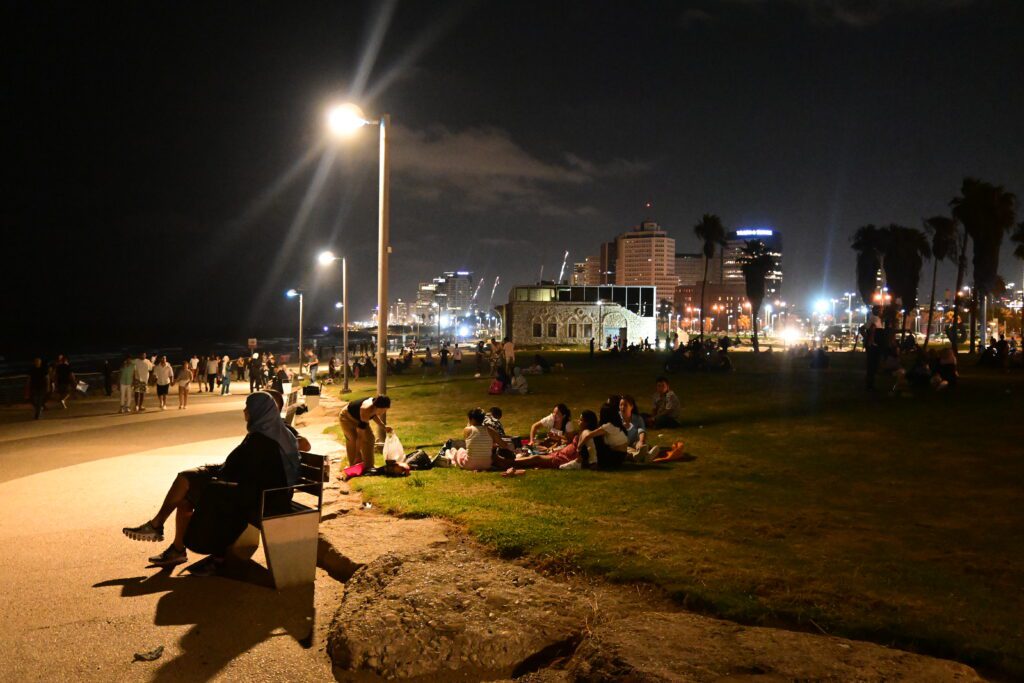

1) Tel Aviv from the perspective of a beach in Jaffa
2) People, both Palestinians and Israelis, enjoying their time outside in a seaside promenade stretching from Jaffa to Tel Aviv
The Palestinians of Haifa
While hiking down from Stella Maris Church to Haifa’s coast through a forested slope, I met two homeless Christian Palestinians, Sami and Elias, along with Elias’ two dogs, Puma and Buff. They live on the mountainside under a tree in two tents. I could not see the path clearly so I asked them for directions to the way down. After explaining the way, Sami invited me for some tea.
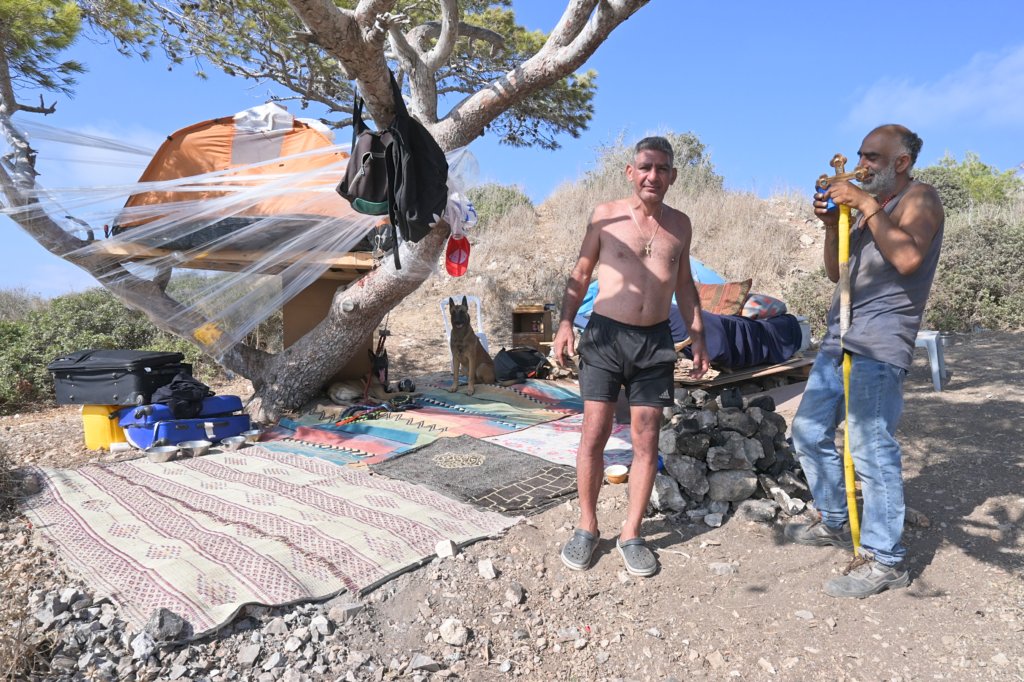

Sami (left) and Elias (right), along with his two dogs, Puma and Buff.
Elias had been homeless for around 2 months. He couldn’t afford to pay rent. Sami, his childhood friend, offered him to live at his place without anything in exchange. Elias, being proud, rejected the offer, saying he preferred living in nature. Not wanting his friend to be alone, Sami joined him, despite having his own home.
While Elias was heating the water in a stove on a small fire he made, I started a conversation with Sami. After talking about the circumstances that led to their situation, Sami explained to me how important Stella Maris Church is to him. When the Israeli forces occupied Haifa, many Palestinians fled the city, but his parents (their surname is Hajjar), whose lineage in Haifa dates back to 600 years ago, stayed, preferring death before abandoning their home. They sought refuge at the Stella Maris Church, which could not be attacked or bombed and provided shelter to many Palestinians who lost their homes in Nakba.
He added that if somebody gave him a choice between being shot to death or leaving Haifa, he would choose death because Haifa is his mother and his home. I was struck by their strong bond to Haifa despite their individual and historical struggles.


When I asked Sami and Elias about how life was living without a roof, they told me ‘What more can we want? We are surrounded by nature, feel the sun above us, and have the sea, this is ‘paradise’. Buff and Puma were really happy and well taken care of. Sami said ‘what more could they want? They have all the space here to run freely and play’.


View from Sami and Elias’ tents. Elias constantly held a big cross in his hand, praying to God every few minutes. He believed that God would help and accompany him through his tough journey. Despite the difficult situation they were in, I could feel the serenity and peace in their hearts. Their faces expressed love and tranquility.
Even in Israel, every Palestinian, every house and every street has a story to tell. These stories help us understand how the creation of Israel came with the dispossession and destruction of countless Palestinians’ way of life. The stories and the heritage are the living testament of this struggle. What better way to reflect on such stories than to do so while watching the sunset over the same sea that has seen everything unfold?
By John Charles Fenech
All photographs are the original work of the author.
March 15, 2024





